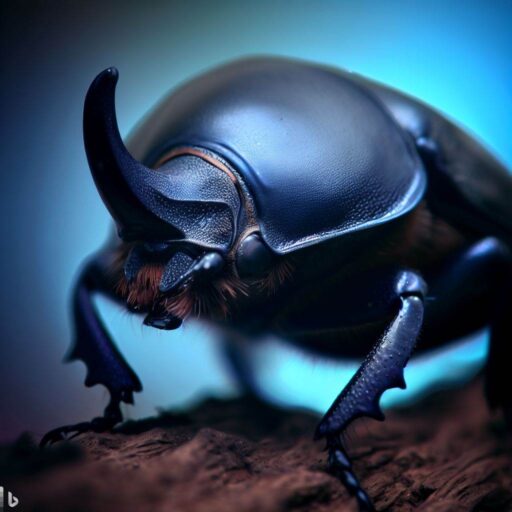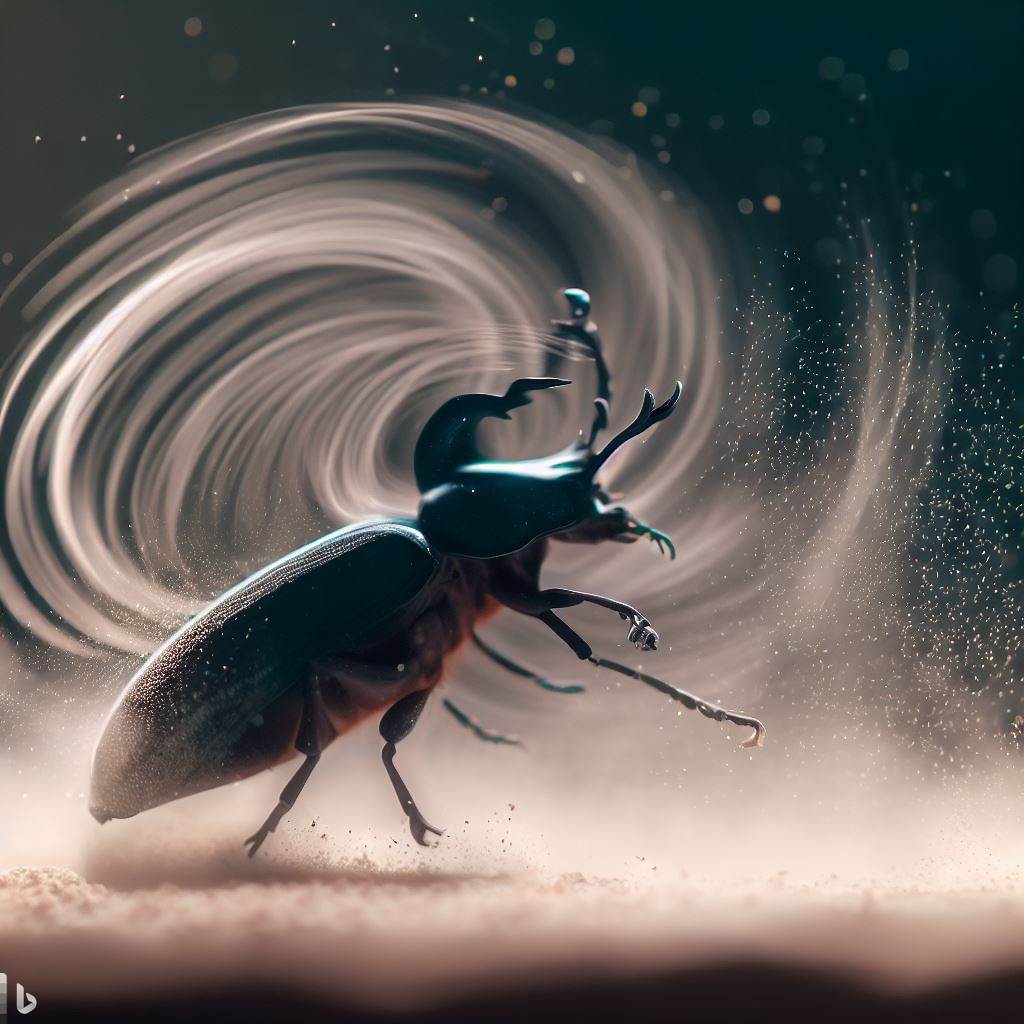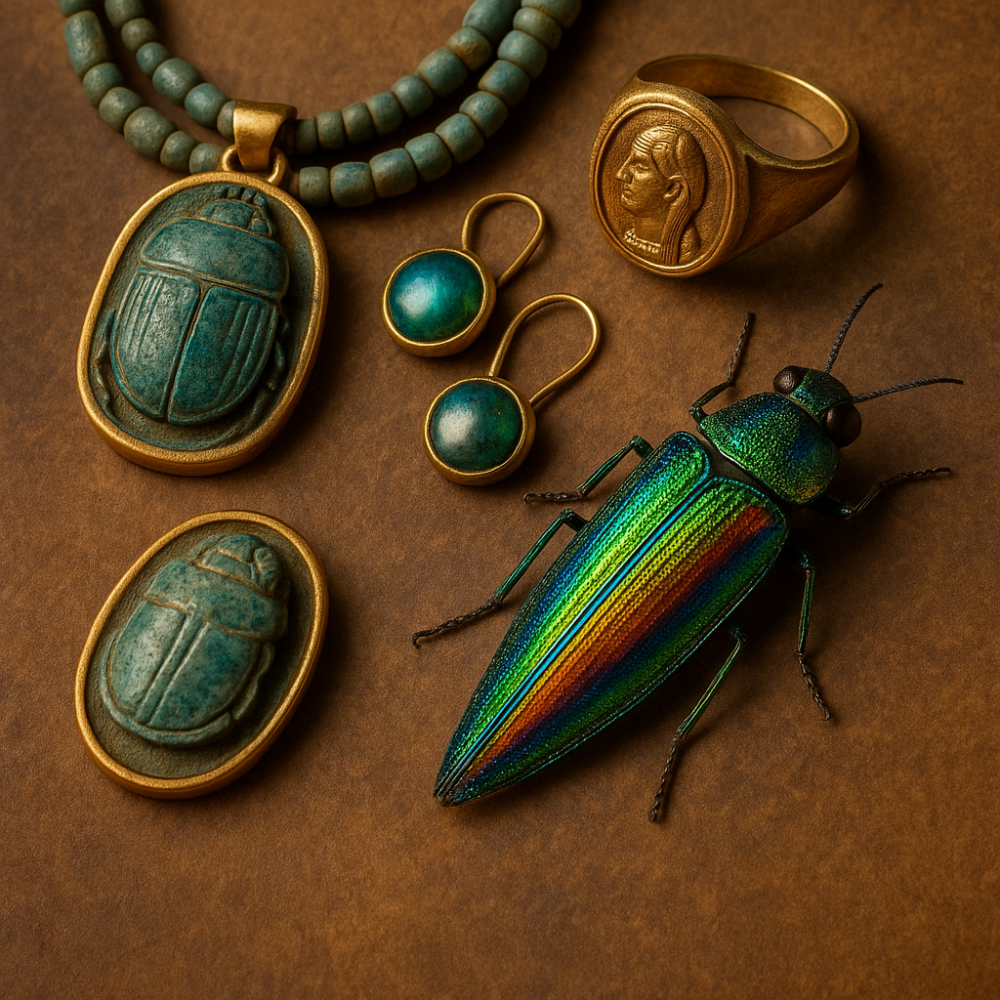.jpg)
You’ve probably never heard of them before, but confused flour beetles are a common issue when it comes to stored grain and flour-based foods. Are you dealing with an infestation?
Get the facts about these pesky critters. You need to take action to protect your food from these uninvited guests!
What do confused flour beetles look like?
The Tribolium confusum, more famously known as the Confused Flour Beetle, is a small insect. It has an oval-shaped body of about 3 to 4 millimeters, along with distinct antennae and six legs.
Amazingly, these beetles can fly! Although they prefer crawling, they can take flight when necessary.
These beetles are classified as “stored product pests” as they feed on stored grains like rice, wheat, corn, oats, and flours. They can contaminate food products with their excrement and dead bodies.
Plus, they emit a unique odor in large infestations. This smell serves as a signal for other confused flour beetles to find food sources or mates.
To prevent infestations, it’s important to keep containers clean and store grains in air-tight containers. That way, you can avoid the confusion of these perplexed pests!
Where do confused flour beetles come from?
Confused flour beetles, or Tribolium confusum, are from warm and dry areas. They can be found in storage sites such as mills, warehouses, and grocery stores.
These pests are usually linked to grains and food items. With their ability to survive in many temperatures and reproduce quickly, they easily infest grain supplies.
These beetles are great survivors. Their small size helps them hide in cracks and crevices. This is where they search for food and shelter.
The confused flour beetle has the edge as it can eat broken grain kernels, damaged goods, and even milled flour. This helps them to flourish in places other insects struggle.
These beetles are drawn to stored grain aromas and the pheromones released by other beetles. This social behavior boosts their reproduction, leading to a rapid rise in numbers.
Scientists from the Journal of Economic Entomology learned that the beetles use pheromones to indicate mating availability, resulting in a rapid increase in their colonies.
How do confused flour beetles get into homes? They seem to fly in, leaving homeowners bewildered and searching for a solution.
How do they get into homes?
Confused flour beetles can sneak into homes through various routes. They infest grains and packaged foods, which can be brought home by unsuspecting consumers. These pests can multiply quickly and cause damage to stored food products.
They love warmth and moisture – making kitchens ideal for them. They can enter through cracks and crevices, or via infested goods or clothing.
Once inside, they can infiltrate pantries and contaminate stored items such as flour, cereals, rice, pasta, and pet food. They can chew through boxes and plastic packaging to get to the food.
It’s important to inspect pantry items for signs of infestation. Clusters of small brown beetles, or discarded shells, mean an invasion. Quick action is needed to eliminate the source and prevent further spread.
One homeowner in Ohio unknowingly brought confused flour beetles into their home with an infested bag of flour from a grocery store. The pantry was overrun! It took a lot of work to get rid of them.
To avoid similar scenarios, check food items before bringing them home and store them properly in airtight containers. Be vigilant and keep those pantry pests away!
What do confused flour beetles eat?
Confused flour beetles are small insects that love stored grain products. They’ll eat grains such as wheat, rice, barley, and corn. Plus, they’re not picky.
They’ll also snack on processed products like pasta, bread, and cereal. Even dried meats and dead insects are on the menu.
These pests prefer moist, warm environments with high humidity. This allows them to multiply quickly and wreak havoc on food supplies.
When it comes to feeding, confused flour beetles prefer broken grains. Their strong jaws allow them to penetrate the outer layer and get to the starchy endosperm. This helps them survive in environments where food is scarce.
These bugs also have interesting behaviors. They release pheromones which act as an attractant for other beetles. This helps them locate new sources of food more easily.
Confused flour beetles have been a nuisance for centuries. Archaeological evidence suggests they were already infesting stored grain in ancient Egyptian tombs and temples. This posed a threat to important food offerings meant for the afterlife. The ancient Egyptians had to fumigate with plant extracts to control the infestation and protect their grain reserves.
To sum up, confused flour beetles are voracious eaters. They can feed on a variety of grain-based items. Knowing their feeding habits can help implement effective control measures to protect stored food.
What damage do they cause?
Confused flour beetles can cause havoc to stored grains and flours. They lay eggs and feed on the grain, leaving contamination and poor quality. The damage includes holes in packaging, spoiled food, and less nutrition.
These beetles reproduce rapidly. Females can lay up to 450 eggs in their lifetime. So if an infestation appears, the population grows quickly and the damage increases. Also, they produce pheromones that draw in more beetles.
To reduce the damage caused by these beetles, proper storage techniques should be used. Ensure grain and flour are stored in sealed containers or packaging. Inspect items for beetle activity, like holes or larvae. If infested, dispose of them quickly.
Keep storage areas clean. Sweep floors and clean shelves to eliminate hiding places. Maintain a cool and dry environment to discourage beetle survival and reproduction. Or, try a complex math problem to confuse them!
How can you get rid of confused flour beetles?
Don’t invite the confused flour beetles to your baking party – they are the ultimate flour rebels! Get rid of them with these 3 steps:
- Get rid of all contaminated food sources.
- Treat affected areas with insecticides.
- Seal cracks and store food properly.
These tips target the beetles’ sustenance and habitat, thus interrupting their life cycle and preventing further infestation.
What are some tips for preventing confused flour beetles?
Confused flour beetles can be kept away with simple steps. Here’s a 4-step guide to keep your pantry free from them:
- Store food right: Put food in airtight containers or resealable bags, so beetles can’t get in.
- Keep your pantry clean: Throw away any spilled or old food, and crumbs or debris that can attract beetles.
- Watch out for signs of infestation: Look for small holes in packaging or tiny beetles. Take action if you see any.
- Keep it hygienic: Clean shelves, countertops, and storage containers often to get rid of beetle breeding grounds.
Also, confused flour beetles like warmth and humidity. So, keeping your pantry cool and dry can help stop them.
Did you know? Confused flour beetles, also called Tribolium confusum, get their name from their love of grain products, mainly flour. These reddish-brown pests are usually found in pantries and breed fast, causing damage to food.
By following these tips, you can maintain a beetle-free pantry and keep your food safe.
What else do you know about confused flour beetles? Get ready to be even more confused than these insects trying to escape a maze of toast crumbs!
What are some other facts about confused flour beetles?
Tribolium confusum, also known as confused flour beetles, are common pests in households. Here are the highlights:
- These small beetles are reddish-brown and measure 3-4 millimeters long.
- They can fly and infest different foods, such as flour, cereals, pasta, and pet food.
- Females lay up to 300 eggs in their lifespan.
- They’re resilient pests; able to survive low temperatures and even freezing conditions.
- They release a pheromone that attracts other confused flour beetles.
- American entomologist Philip Reese Uhler first described them in 1868.
- Since then, they’ve become a worldwide concern due to their ability to damage stored goods.
Confused flour beetles can be a menace, so getting to know their habits is key. To learn more, just follow the trail of breadcrumbs, and maybe a few creepy crawlies!
Where can I go for more information on these beetles?
Are you searching for info about confused flour beetles? There are several trustworthy resources. Check out your local university or agricultural extension office. Experts there specialize in pest control and have helpful insights.
Also, consult reliable online sources like gov’t websites or industry associations focused on pest management. They usually provide details like ID, life cycle, and control methods.
For more detailed info, look into scientific journals on entomology or agriculture. They contain studies by researchers who’ve extensively studied confused flour beetles. Plus, empirical evidence supports the info.
You can also connect with people who’ve faced confused flour beetles. It could be a gardener, farmer, or an online community. Hear their strategies – it could save time and effort.
Take Sarah, for example. She’s a small-scale organic farmer dealing with these beetles in her stored grains for months. Despite trying various organic methods, she couldn’t get rid of them. So, she contacted a local entomologist.
He said confused flour beetles are good at adapting and avoiding insecticides. Sarah should thoroughly clean her storage area, use containers with lids, and keep proper moisture levels in grains.
After constant vigilance and patience, Sarah finally got rid of the pests. Stories like Sarah’s give inspiration and guidance. Combining others’ experiences and scientific knowledge increases chances of managing these pests.
FAQ
Q: What is a confused flour beetle?
A: The confused flour beetle (Tribolium confusum) is a common stored grain pest that belongs to the beetle family Tenebrionidae. It is commonly found in stored grains, flour mills, and food processing facilities.
Q: How can I identify a confused flour beetle?
A: The confused flour beetle is reddish-brown and measures approximately 3-4 mm in length. It can be identified by its clubbed antennae and the distinct shape of its body, which is elongated and flattened.
Q: What is the lifecycle of a confused flour beetle?
A: The lifecycle of a confused flour beetle includes four stages: egg, larva, pupa, and adult. The development from egg to adult takes around 5-8 weeks, depending on environmental conditions such as temperature and food availability.
Q: What do confused flour beetles eat?
A: Confused flour beetles primarily feed on grains and grain products, including flour, cereal, pasta, and bread. They can also infest pet food, spices, and dried fruits.
Q: Are confused flour beetles harmful to humans?
A: While confused flour beetles are not directly harmful to humans, their presence in food products can contaminate them with their excrement and cast skins. This can lead to quality deterioration and potential health risks if consumed.
Q: How can I prevent or control confused flour beetle infestations?
A: To prevent confused flour beetle infestations, it is essential to maintain good sanitation practices in storage areas, regularly inspect stored grains and food products, and ensure proper packaging to avoid entry. If an infestation occurs, professional pest control methods may be required.





Leave a Reply